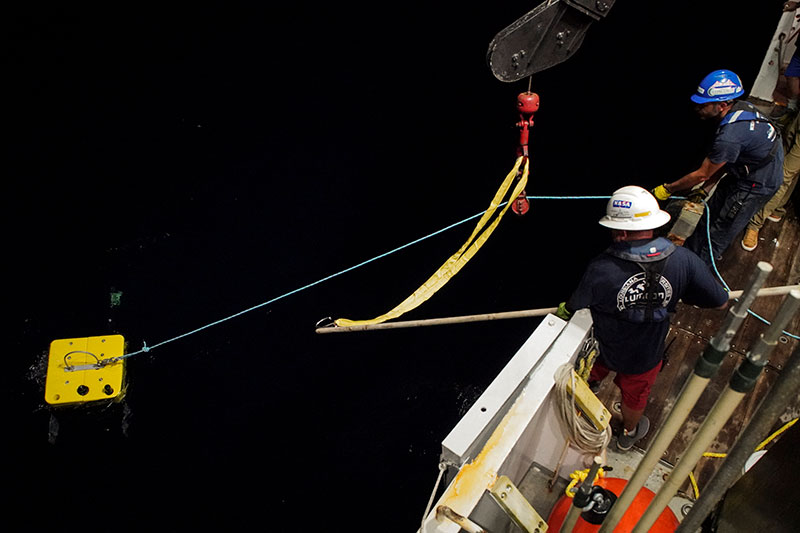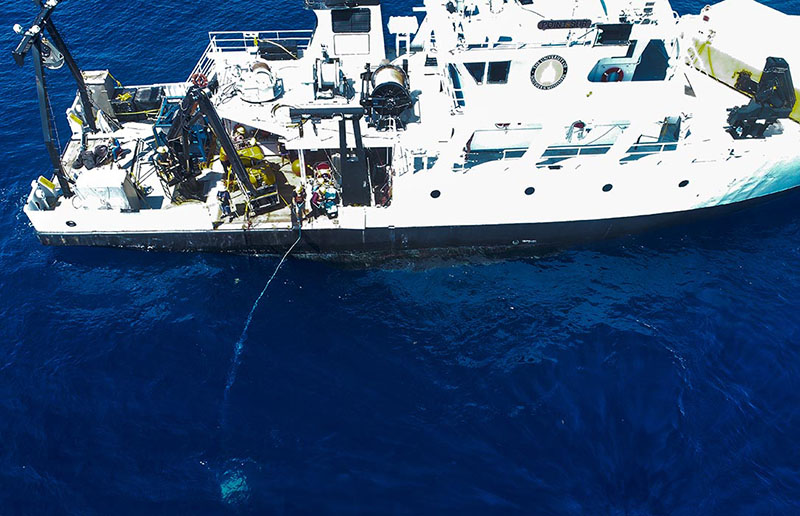
By Nathan J. Robinson, Director – Cape Eleuthera Institute
June 11, 2019
We are very proud to have on R/V Point Sur the scientist, Edith Widder, who captured the first-ever footage of a giant squid in its natural environment! Edith was able to achieve this after so many other people had tried and failed by utilizing a deep-sea camera, called the Medusa, that is uniquely stealthy in its approach to filming deep-sea organisms.
Most cameras must be fitted with bright illuminators to pierce through the inky blackness of the deep ocean; however, the bright lights produced by these illuminators have the unintended consequence of scaring away many of these animals that would otherwise live in almost eternal darkness. The Medusa addresses this issue in two ways. Firstly, it is fitted with very dim illuminators that shine a specific color of red light that has been proven to visible by us but invisible to most deep-sea life. Secondly, it has a hi-tech low-light camera that is capable of functioning under the dim light of the red illuminators. Together, this makes the Medusa an incredibly unobtrusive camera for recording deep-sea organisms without them even knowing that they are on camera!

Recovery of Medusa at night. Image courtesy of Journey into Midnight: Light and Life Below the Twilight Zone. Download larger version (jpg, 4.4 MB).
Using the Medusa, we hope to make history and capture footage of a live giant squid for the first time in the Gulf of Mexico. To achieve this, we will be conducting several deployments of the Medusa to depths between 915 and 1,830 meters (3,000 and 6,000 feet). To ensure that it remains at the desired depth, it is tethered by a long rope that is fastened to a series of surface buoys. Each deployment will last about 24 hours, which is about as long as the lifespan of the camera’s batteries. After this time, we locate the free-floating buoys and pull up the Medusa using the tether. With the Medusa recovered, it is simply a matter of looking through the footage and seeing what swam past.

Second deployment of Medusa off the Point Sur. Image courtesy of Journey into Midnight: Light and Life Below the Twilight Zone. Download larger version (jpg, 491 KB).
We had our first trial deployment of the Medusa on the 8th of June. Confirming that all our equipment was working perfectly, we began our first true deployment earlier today. At the time of writing, the Medusa is still somewhere in depths. Perhaps a giant squid is swimming past the camera right now. Only time will tell...
The Medusa project is being run by Dr. Edith Widder of the Ocean Research & Conservation Association (ORCA) in association with Dr. Nathan J. Robinson of the Cape Eleuthera Institute.